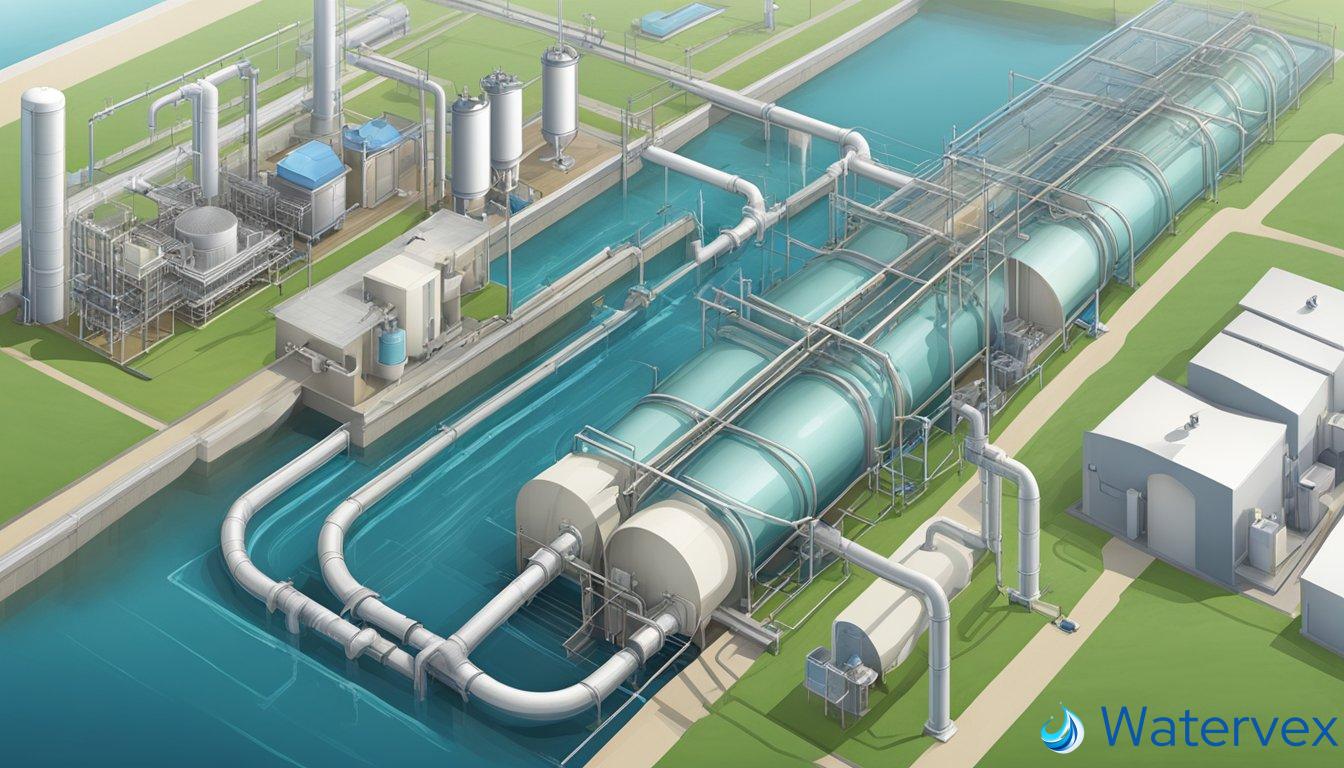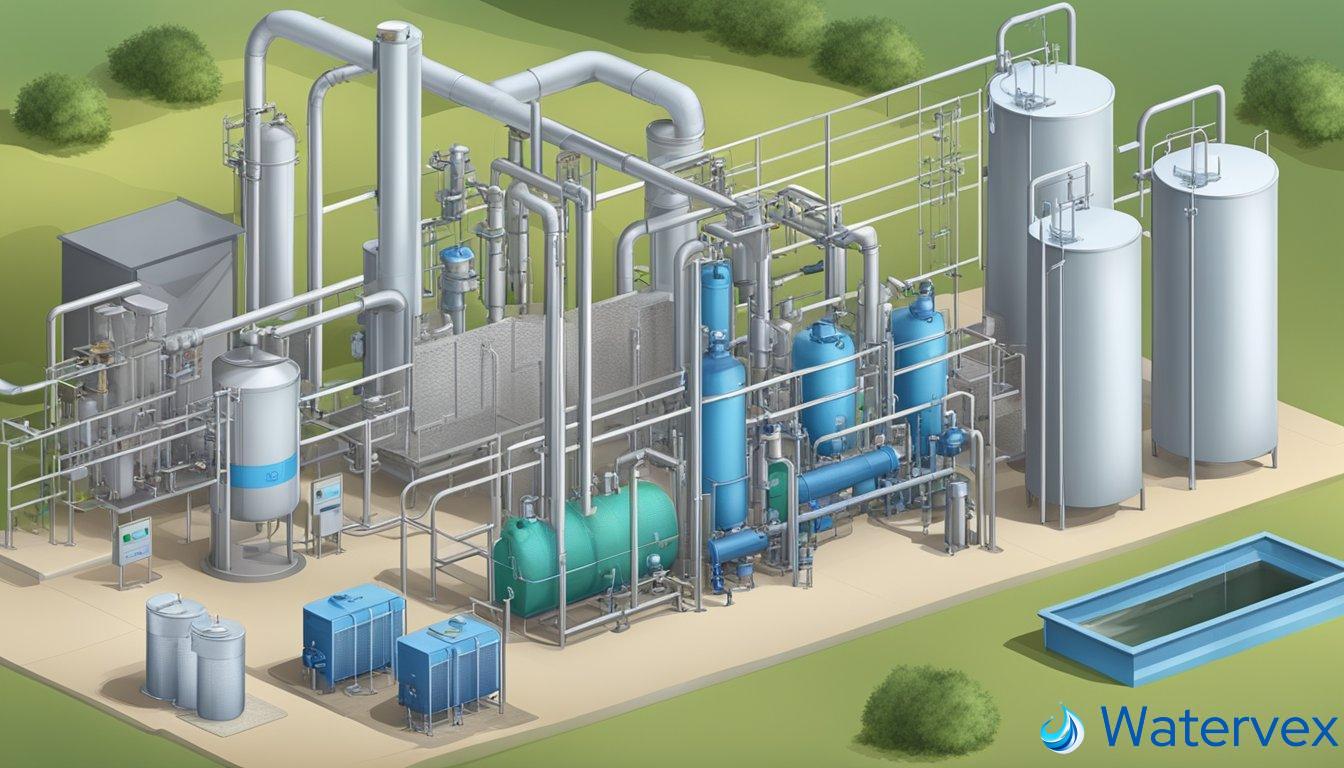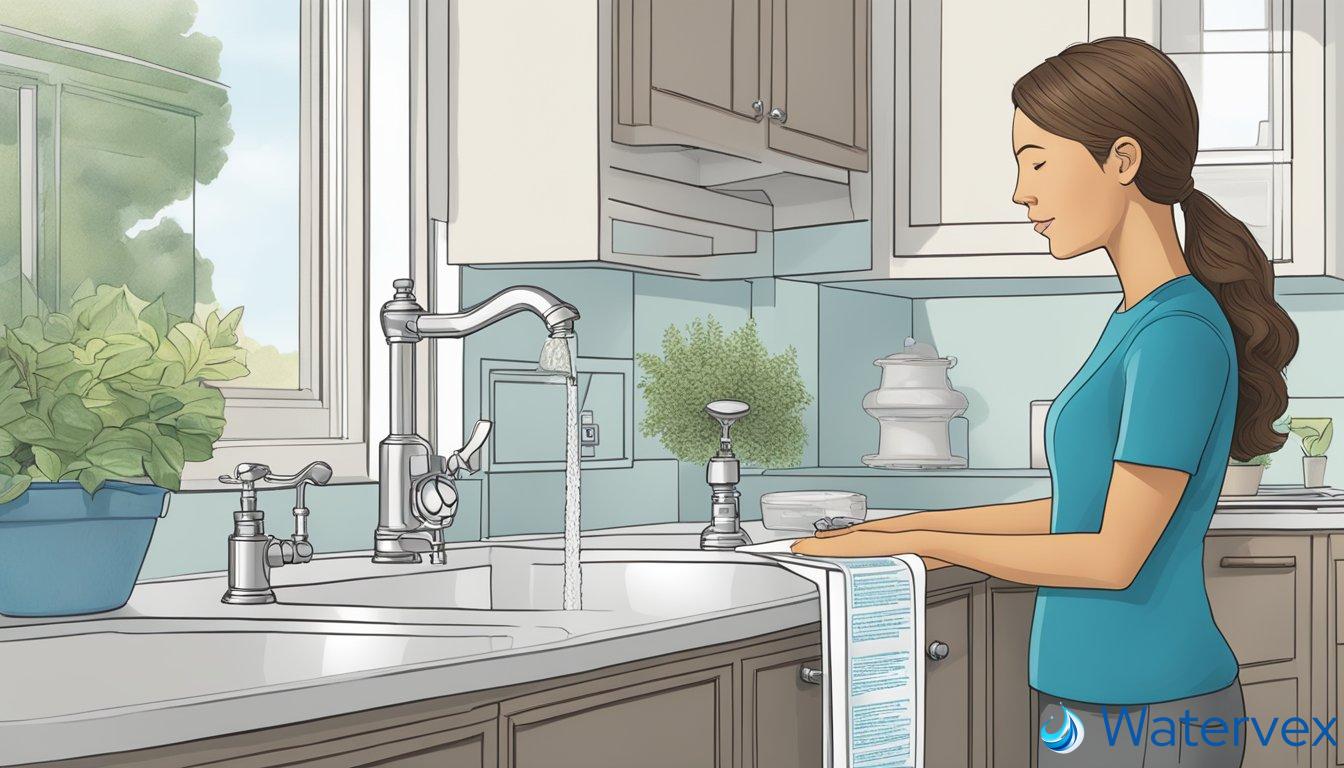Water treatment is a critical process that ensures clean, safe, and palatable drinking water for our homes. Understanding the terminology used in water treatment can feel overwhelming, but it’s crucial to making informed decisions about the water quality in your household. Terms like ‘point-of-entry’ and ‘point-of-use’ systems paint a picture of where the water treatment takes place – either at the main water line entering your home or right where you use the water, such as your kitchen sink.

Knowing what each water treatment term means can provide you with the confidence to navigate the complexities of water filtration, softening, and disinfection processes. For instance, if you’re faced with hard water, terms like ‘ion exchange’ or ‘reverse osmosis‘ become relevant as they relate to the methods that remove minerals like calcium and magnesium, which are responsible for scale build-up in pipes and appliances.
Key Takeaways
- Understanding water treatment terms empowers homeowners to make educated decisions about their water quality.
- Knowledge of water treatment processes can lead to improved health outcomes and protection of home appliances.
- Familiarity with the glossary terms is essential for maintaining safe and high-quality drinking water in your home.
What Does Each Term in Water Treatment Mean?

Understanding water treatment terms is essential for ensuring your family’s health and the longevity of your household appliances. From alkalinity to bacteria, each term carries specific significance.
Alkalinity and alkali refer to waters’ ability to neutralize acids. Water with high alkalinity usually contains elevated levels of bicarbonates, carbonates, and hydroxides.
Conversely, acidity refers to water’s capacity to act as an acid, often quantified by the presence of hydrogen ions. Acidic water can corrode pipes and fixtures.
The term ppm or parts per million denotes the concentration of a substance in water. It’s like saying, out of one million units, one unit is the substance you’re measuring. This measurement often applies to mineral content, such as calcium and magnesium in hard water.
Speaking of hardness, it relates to water’s content of certain minerals, primarily calcium and magnesium, which can lead to scale build-up.
Organic materials in water include compounds that contain carbon, except for carbonate and bicarbonate salts, while inorganic compounds lack carbon and can include metals and other natural or synthetic substances.
Reverse osmosis and deionization are processes to purify water. Reverse osmosis pushes water through a membrane, filtering out many contaminants. Deionization uses ion exchange to remove mineral salts from water.
Activated carbon works by adsorption, where contaminants adhere to the surface of the carbon particles. It’s used to remove organic compounds and can improve taste and odor.
Aeration is a treatment process involving air, effectively removing gases like radon or hydrogen sulfide from water.
An anion exchange involves exchanging negatively charged ions in water with other ions from the exchange media, often used to treat brine or remove other inorganic compounds.
In membrane filtration, water is moved through a semipermeable membrane, which acts almost like a net that captures unwanted particles, such as certain organisms and bacteria.
Familiarizing with these terms allows you to make informed decisions about water quality in your home.
Why Are These Water Treatment Terms Important for Homeowners?

Understanding water treatment terms empowers you to make informed decisions about the quality and safety of your home’s water supply. Knowing terms like hard water and softened water helps determine if your home might benefit from water softening systems, which is crucial if you’ve noticed scale buildup on appliances or a lack of suds when washing clothes.
- Hard water has high levels of calcium and magnesium, leading to scale and potentially hindering soap’s effectiveness.
- Softened water, treated to reduce these minerals, can prolong the life of your appliances and improve cleaning efficiency.
Water conditioning is a broader term encompassing various processes, including water softening, to improve water quality. For instance, a system reducing chlorine would be conditioning water without necessarily softening it. Terms like total hardness, representing the overall mineral content, directly impact whether to install a water softener or opt for other water conditioning methods.
Potable water, or drinking water, should have acceptable taste and safety standards. Here, purification becomes relevant. It’s essential to understand terms like chemical oxygen demand (COD) and biochemical oxygen demand (BOD) because they’re indicators of water quality, signifying the amount of organic pollutants.
As effluent, or discharged water, affects the wider environment, knowledge of its quality and treatment options is vital. Technologies such as activated alumina can remove undesirable elements from the water, making it safer for consumption and release into ecosystems.
Quick Reference Guide:
- Potable Water: Safe for drinking
- Purification: Removal of contaminants
- Softened Water: Low calcium and magnesium levels
- Water Conditioning: Improvement of water quality
- Water Softening: Specific type of conditioning to reduce hardness
- Biochemical Oxygen Demand: Measure of organic material in water
- Chemical Oxygen Demand: Measure of organic and inorganic material
- Effluent: Treated water released into the environment
- Hard Water: High mineral content
- Total Hardness: Combined measure of all hard minerals
- Activated Alumina: Used for removing fluoride and other substances
Don’t overlook these technical terms, as they form the core of understanding and managing your home’s water. They guide the choices you make towards ensuring safe, clean, and efficient water use in your household.
How Do Specific Water Treatment Processes Affect Your Health and Home?

Evaluating water treatment processes is crucial for ensuring the safety of your drinking water and protecting your home environment.
Impact of Contaminants on Health and Home
Algae and amoeba in your water supply can lead to health issues such as gastrointestinal infections. To illustrate, when total organic carbon (TOC) is high, it can indicate a proliferation of these microorganisms, potentially resulting in increased biochemical oxygen demand (BOD).
Your home might also be at risk. For instance, detergents found in well water can cause scaling and reduce the lifespan of appliances. Benzene, a volatile organic compound (VOC), can vaporize in showers, creating potentially harmful airborne contaminants.
Chlorine demand refers to the amount of chlorine needed to disinfect water adequately. High demand signals a high presence of reactive microorganisms and organic compounds, affecting both your health and your plumbing.
Chloramines are a byproduct of chlorine and ammonia treatment, reducing health risks but potentially affecting the taste and odor of your water.
Beneficial Water Treatment Solutions
Seeking solutions? Consider ultrapure water systems for the ultimate removal of impurities, although they require significant maintenance. In terms of health, such systems ensure water free from pathogens and organic compounds.
Look for treatment systems capable of reducing chlorine demand by effectively removing contaminants, thus making chloramines control more manageable.
Adequate treatment for detergents and organic contaminants will protect not just your health but also help prevent scale buildup, preserving household appliances and pipes.
Remember, the right water treatment provides a two-fold benefit: protecting your health and prolonging the life of your home’s plumbing systems.

